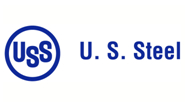Steel Mills

Big River Steel Not Sourcing Pig Iron From Russia, Ukraine: USS
Written by Michael Cowden
April 29, 2022
US Steel is no longer importing pig iron from Ukraine and Russia for its Big River Steel Works – now the official name of its Osceola, Ark., electric arc furnace (EAF) sheet mill.
The Pittsburgh-based steelmaker has also mostly weaned its integrated steel mill in Košice, Slovakia, off Russian raw materials as well, they said.
![]() Big River Steel Works
Big River Steel Works
“To be clear, we’ve got no exposure to metallics from Russia or Ukraine with Big River,” US Steel president and CEO David Burritt said during the company’s first quarter earnings conference call on Friday, April 29.
US EAF sheet mills, like those abroad, have traditionally relied heavily on pig iron from three nations: Brazil, Ukraine, and Russia. Ukraine and Russia alone accounted for approximately 60% of that supply.
Sourcing from Ukraine has become difficult, if not impossible, because of the war. And most US steelmakers have tried to pivot away from Russia. They have done so even though tariffs imposed on Russian pig iron in retaliation for the invasion are a meager $1.11 per metric ton.
Big River lowered its pig iron consumption by increasing use of other virgin metallics such as hot-briquetted iron (HBI). The same strategy was adopted across US Steel’s EAF operations, company executives said.
US Steel also operates an EAF, installed in 2020, at its Fairfield seamless tube mill in near Birmingham, Ala.
The company aims to cut in half its reliance on third party suppliers of metallics – not only of pig iron but also of HBI, direct-reduced iron (DRI) and prime scrap – once a new pig iron caster at is Gary Works in northwest Indiana is up and running.
US Steel announced in late February that it was spending $60 million to add pig iron capacity of 500,000 tpy to Gary Works.
That caster is expected to start operations in early 2023. US Steel has its own mines and is long on liquid iron at Gary Works, which means the addition of pig iron production won’t reduce steel output from the mill, Burritt said.
The pig caster at Gary unlikely to be the last investment in the raw materials space. “We continue to evaluate additional opportunities to further increase our self-sufficiency,” he said.
Big River Steel Works is slated to become a “mega mill” with annual capacity of 6.3 million tons per year (tpy). An additional 3 million tpy are slated to come from two new EAFs scheduled to begin production in 2024.
US Steel Košice
While Big River is no longer sourcing raw materials from Russia, the same cannot yet be said for US Steel’s operation in Slovakia.
“Coal has been completely stopped” in response to EU sanctions on Russia coal exports, U.S. Steel chief financial officer Christine Breves said.
“We are getting a little bit of iron ore (from Russia). But … we really have diversified our sources, and that’s very small at this point in time,” she added.
Case in point: Košice is now buying more iron ore from the seaborne market, and then railing that material from ports to the mill.
That has required Košice to expand its narrow-gauge rail capacity, allowing it to bring more in from Western Europe. Russia and other former Soviet Union countries to the east of the mill use broad-gauge rails.
Russian iron ore exports, unlike Russian coal exports, have not been sanctioned by the EU.
Košice has also built roughly 78 days of supply when it comes to raw materials. “We have enough to make sure that we get through the second quarter. Speculating beyond the second quarter and what’s happening with the Ukraine War is always hard,” Burritt said.
The Slovakian mills has raw steel production capacity of 4.5 million metric tons per year. It makes hot-rolled, cold-rolled, and coated products as well as tin plate, electrical steels, and spiral-weld pipe.
Burritt noted that the mill had the full support of both Slovakian and US officials because it is a key supplier to customers throughout Europe and because it is one of the largest employers in Slovakia.
By Michael Cowden, Michael@SteelMarketUpdate.com

Michael Cowden
Read more from Michael CowdenLatest in Steel Mills

Nucor holds HR list price at $910/ton
Nucor is keeping its list price for spot hot-rolled coil unchanged after last week’s shortened holiday week.

Cliffs unveils new hydrogen-powered stainless line in Ohio
CEO Lourenco Goncalves, flanked by state leaders and union reps, touted the project as proof that US manufacturing is not only alive, but also advancing.

Cliffs idles Steelton, Riverdale, and Conshohocken operations
Cliffs has idled facilities in Riverdale, Ill., and Conshohocken and Steelton, Pa.

Radius loss narrows, volumes climb in ‘healthy’ West Coast market
Stronger steel demand in the Western US, rising scrap flows, and improved rolling mill utilization drove sequential gains for Portland, Ore.-based Radius Recycling.

AISI: Raw steel production backs off multi-year high
US raw steel output edged lower last week after hitting a multi-year high in mid-June, according to the American Iron and Steel Institute (AISI).
